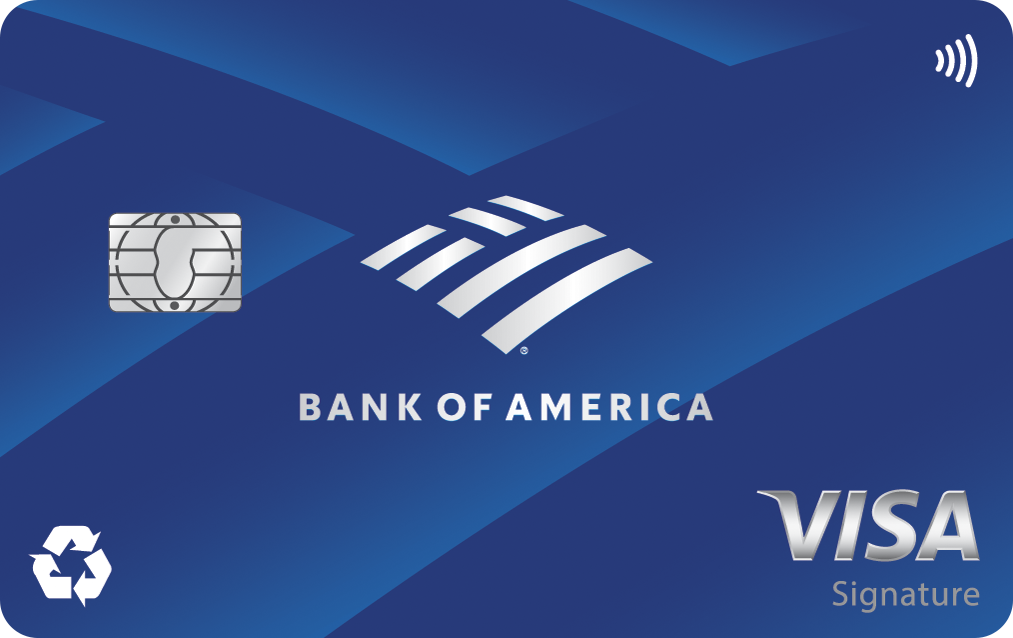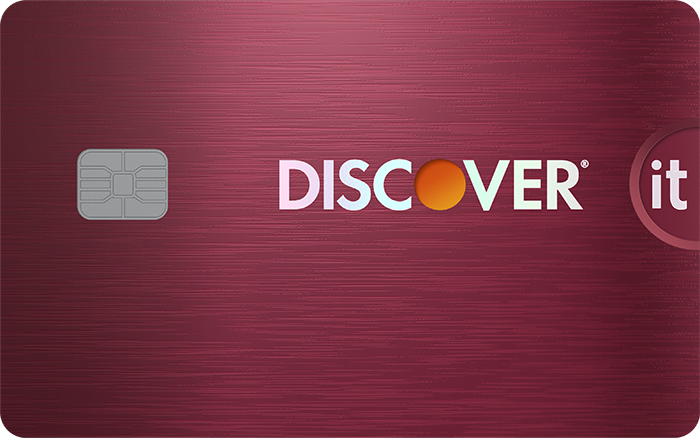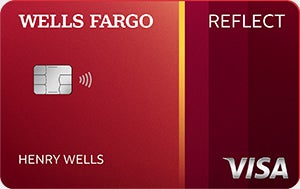Ever dream of jetting off to your dream destination without emptying your bank account? Credit card miles are the secret weapon of savvy travelers, letting you rack up rewards for flights, hotels, and more just by spending like you normally do. Below, I'll break down how to earn, spend, and maximize credit card miles -- and share some of my top tips along the way.
What are credit card miles?
Credit card miles are a type of rewards points that can help you save on travel expenses like flights, hotels, and even rental cars. Instead of paying cash, you can use these miles to cover part or all of your travel costs. Many savvy travelers use miles to significantly reduce the price of their vacations, making travel more affordable.
How do you earn credit card miles?
You can earn miles many ways, but one of the fastest ways to earn miles is with a travel credit card. Most travel credit cards earn at least 1 mile per $1 on eligible purchases. Often, you can earn between 2 miles and 5 miles per dollar or more on categories like dining, rideshare, hotels, and airfare.
You can also earn credit card miles through frequent flyer programs. These loyalty programs, typically free to join, reward you with miles every time you fly with the airline -- no special credit card required.
Credit card comparison
We recommend comparing options to ensure the card you're selecting is the best fit for you. To make your search easier, here's a short list of standout credit cards.
| Offer | Our Rating | Welcome Offer | Rewards Program | APR | Learn More |
|---|---|---|---|---|---|
|
5.00/5
Our ratings are based on a 5 star scale.
5 stars equals Best.
4 stars equals Excellent.
3 stars equals Good.
2 stars equals Fair.
1 star equals Poor.
We want your money to work harder for you. Which is why our ratings are biased toward offers that deliver versatility while cutting out-of-pocket costs.
|
Discover will match all the cash back you’ve earned at the end of your first year. INTRO OFFER: Unlimited Cashback Match for all new cardmembers–only from Discover. Discover will automatically match all the cash back you’ve earned at the end of your first year! There’s no minimum spending or maximum rewards. You could turn $150 cash back into $300. | 1% - 5% Cashback Earn 5% cash back on everyday purchases at different places you shop each quarter like grocery stores, restaurants, gas stations, and more, up to the quarterly maximum when you activate. Plus, earn unlimited 1% cash back on all other purchases. |
Intro: Purchases: 0%, 15 months Balance Transfers: 0%, 15 months Regular: 17.74% - 26.74% Variable APR *Rates as of December 15, 2025 |
||
|
5.00/5
Our ratings are based on a 5 star scale.
5 stars equals Best.
4 stars equals Excellent.
3 stars equals Good.
2 stars equals Fair.
1 star equals Poor.
We want your money to work harder for you. Which is why our ratings are biased toward offers that deliver versatility while cutting out-of-pocket costs.
|
N/A | N/A |
Intro: 0% intro APR for 21 months from account opening on purchases and qualifying balance transfers Purchases: 0% intro APR for 21 months from account opening on purchases Balance Transfers: 0% intro APR for 21 months from account opening on qualifying balance transfers Regular: 17.49%, 23.99%, or 28.24% Variable APR |
||

Apply Now for Bank of America® Travel Rewards credit card
On Bank of America's Secure Website. |
4.70/5
Our ratings are based on a 5 star scale.
5 stars equals Best.
4 stars equals Excellent.
3 stars equals Good.
2 stars equals Fair.
1 star equals Poor.
We want your money to work harder for you. Which is why our ratings are biased toward offers that deliver versatility while cutting out-of-pocket costs.
|
25,000 points (worth $250) 25,000 online bonus points after you make at least $1,000 in purchases in the first 90 days of account opening - that can be a $250 statement credit toward travel purchases | 1.5-3 points per dollar Earn unlimited 1.5 points per $1 spent on all purchases, with no annual fee and no foreign transaction fees, and your points don't expire as long as your account remains open. Earn 3 points per $1 spent on travel purchases booked through the Bank of America Travel Center. |
Intro: 0% Intro APR for 15 billing cycles for purchases, and for any balance transfers made in the first 60 days. After the Intro APR offer ends, a Variable APR that’s currently 17.74% - 27.74% will apply. A 3% Intro balance transfer fee will apply for the first 60 days your account is open. After the Intro balance transfer fee offer ends, the fee for future balance transfers is 4%. Balance transfers may not be used to pay any account provided by Bank of America. Purchases: 0% Intro APR for 15 billing cycles for purchases Balance Transfers: 0% Intro APR for 15 billing cycles for any balance transfers made in the first 60 days Regular: 17.74% - 27.74% (Variable) |
Apply Now for Bank of America® Travel Rewards credit card
On Bank of America's Secure Website. |
At Motley Fool Money, every credit card we review is rated on a 5-star scale, scored to a tenth of a point. Our ratings weigh the features that matter most: rewards rates, 0% intro APR offers, welcome bonuses, fees, and perks like travel credits and purchase protections.
We score cards within four primary categories:
- 0% intro APR cards for paying down balances or financing purchases
- Travel cards for maximizing points, miles, and perks on the road
- Cash back and rewards cards for everyday spending value
- Business cards designed to fit company expenses and growth
Top-rated cards typically combine strong long-term value, attainable bonuses, low fees, and standout protections or perks.
We combine these factors with an evaluation of brand reputation and customer satisfaction to ensure you're getting the best credit card recommendations. Our aim is to maintain a balanced best-of list featuring top-scoring credit cards from reputable brands. 'Best for' category selections on this page are determined by our editors, and a single card may be recognized in multiple categories.
Ordering within lists is influenced by advertiser compensation, including featured placements at the top of a given list, but our product recommendations are NEVER influenced by advertisers. Learn more about how Motley Fool Money rates credit cards.
At Motley Fool Money, every credit card we review is rated on a 5-star scale, scored to a tenth of a point. Our ratings weigh the features that matter most: rewards rates, 0% intro APR offers, welcome bonuses, fees, and perks like travel credits and purchase protections.
We score cards within four primary categories:
- 0% intro APR cards for paying down balances or financing purchases
- Travel cards for maximizing points, miles, and perks on the road
- Cash back and rewards cards for everyday spending value
- Business cards designed to fit company expenses and growth
Top-rated cards typically combine strong long-term value, attainable bonuses, low fees, and standout protections or perks.
We combine these factors with an evaluation of brand reputation and customer satisfaction to ensure you're getting the best credit card recommendations. Our aim is to maintain a balanced best-of list featuring top-scoring credit cards from reputable brands. 'Best for' category selections on this page are determined by our editors, and a single card may be recognized in multiple categories.
Ordering within lists is influenced by advertiser compensation, including featured placements at the top of a given list, but our product recommendations are NEVER influenced by advertisers. Learn more about how Motley Fool Money rates credit cards.
Where can you spend credit card miles?
Here are some ways you can spend credit card miles:
- Flights: Book your next trip using miles instead of cash.
- Upgrades: Treat yourself to a first-class or business-class seat.
- Hotels: Go for that ocean-view room -- you've earned it.
- Rental cars: Use miles to reserve your ride.
Some rewards programs also allow you to spend miles on:
- Vacation packages
- Exclusive experiences
- Shopping
- Baggage fees
Some programs allow you to convert miles to cash, although you generally get the least value this way.
Keep in mind that different credit cards have different transfer partners. For example, one card might allow you to transfer miles to domestic airlines, while another offers international airline or hotel transfers. It's a good idea to check transfer options before applying for a new credit card.
How much are credit card miles worth?
You can usually redeem miles one of two ways:
- Through the airline, hotel, or other travel partner directly
- Through a travel portal, similar to Expedia, run by your credit card issuer
The value of a mile changes based on where you spend it. For instance, miles tend to offer better value for flights than other partners, and tend to go farthest when you're booking on your card's travel portal. Always compare redemption options to maximize your miles.
Best ways to earn credit card miles
Sign-up bonuses
Many travel cards come with generous credit card sign-up bonuses, like "Earn 50,000 miles after spending $3,000 in the first three months." These bonuses are often the fastest way to build your miles balance. A sign-up bonus could mean scoring a free flight to Hawaii or covering a round trip to Europe!
If you're interested in taking advantage of a sign-up bonus, check out our list of the best credit cards sign-up bonuses.
Spending in bonus categories
Certain cards offer extra miles on specific purchases. For example, you might earn:
- 1 mile per dollar on everyday spending
- 3 miles per dollar on dining
- 5 miles per dollar on travel
Look for a card that rewards spending in the categories where you spend the most.
How to redeem credit card miles
There are two main ways to redeem credit card miles:
- Transfer the miles directly to an airline, hotel, or other business, then book directly
- Book with miles through the credit card's travel portal
Miles usually have more value when booking through your credit card's travel portal. However, many of these portals are similar to Expedia, or even run by Expedia. If you'd prefer to book directly with an airline, you'll have to transfer your points to the airline itself.
Booking with miles is almost identical to paying with cash: You input your trip details, pick the flight or hotel you'd like to book, and add your contact information. The biggest difference is selecting to pay in miles rather than inputting credit or debit card information at the end. Miles are usually deducted from your account balance instantly.
Some travel portals, airlines, and hotels have blackout dates for individuals paying in miles. Be careful: These blackout dates aren't always stated up front. When I book a trip, I add all my flights and hotels to my cart first, then check to make sure I can pay for all of them in miles before I finalize booking.
Potential pitfalls to watch for
Expiration dates
Not all miles last forever. Some programs enforce expiration policies, typically one year from the date they're earned. Many programs will extend the expiration date if you regularly earn or spend miles. If your account stops earning or spending miles, though, those older miles will expire.
To avoid issues with expiring miles, I use my travel credit cards to pay for a couple of my monthly subscriptions. That way, I continue accumulating miles each month, and my existing miles don't expire.
Value for money
Before you commit to a card, it can be helpful to calculate whether your card's rewards will help you achieve your travel goals.
Consider a trip you'd like to take, estimate how many miles you'll need, and determine how quickly you can earn them with your card's rewards structure.
Here's how I do it: You can check flight prices in miles on many major airlines' websites. Shop for the flight you're interested in, but check the "Pay in miles" option when searching for flights. If the flight I want is 50,000 miles, and my card earns 2 miles per dollar spent, I know I'll have to spend $25,000 to earn the points I need for a free flight. If I regularly charge $5,000 per month to my credit card, I can earn the flight in just five months.
Choosing the right credit card for miles
There are plenty of travel credit cards to choose from, so it's crucial to find one that matches your spending habits and goals.
Card types
There are two main types of cards that earn miles:
- General travel cards: Earn miles that can transfer to multiple partners for maximum flexibility.
- Branded travel cards: Designed for loyalty to a specific airline or hotel chain, often with exclusive perks.
Many people prefer general travel cards for their flexibility. However, if you're loyal to a specific company, it may be better to get a branded travel card. These cards often offer branded rewards that outpace general travel cards.
Comparing credit cards
Here are a few things to think about when you're picking a travel credit card:
- Additional perks: Many travel cards offer airport lounge access, reimbursement for TSA PreCheck, or other premium perks.
- Annual fees: Travel credit cards can have annual fees as low as $0 or as high as $600 and up. Pick one that's right for your budget.
- Earning categories: Focus on cards that reward your biggest spending categories.
- Redemption options: Check transfer partners and other ways to use your points, like cash back or gift cards.
Finding the best travel credit card for miles
With the right card and strategy, credit card miles can unlock amazing travel opportunities while keeping your wallet happy. Ready to get started? Check out our list of the top travel credit cards and start earning miles today.
FAQs
-
Some credit card miles expire and some don't. Contact your issuer's customer service if you're not sure whether your miles expire.
-
Sometimes -- for example, if you have two cards that both transfer points to United, you can combine points. Also, if you have two cards from the same issuer, you may be able to combine points. Chase allows customers to combine and transfer points between many of the cards in its ecosystem.
The Motley Fool owns shares of and recommends Visa.

